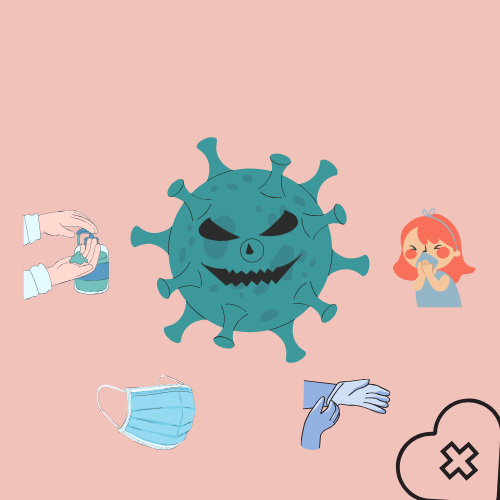What Is COVID‑19 Variant NB.1.8.1 (“Nimbus”)? 🦠
NB.1.8.1, also called Nimbus, commonly known as “Razor Blade Throat,” is a subvariant of the Omicron family, first detected in January 2025 and now found in over 20 countries, including the US, UK, India, China, and Thailand.
Classified by WHO as a “variant under monitoring,” Nimbus exhibits several spike-protein mutations that may make it more transmissible, though not generally more severe .
By early June, NB.1.8.1 accounted for ~37% of US cases and about 11% of global cases .
“Razor Blade Throat”: Is It Unique to Nimbus?
- A sharply painful sore throat—often described as “swallowing razor blades or glass”—has been widely reported with NB.1.8..
- However, experts emphasize that severe sore throat has been a symptom of COVID infection for years—present in up to 70% of cases.
- No clear evidence shows NB.1.8.1 causes more throat pain than previous variants—the nickname reflects anecdotal intensity, not scientific novelty.
How Worried Should You Be?
| Concern | Insight |
|---|---|
| Virus Severity | Current data show NB.1.8.1 does not lead to higher hospitalization or death rates than prior variants. |
| Transmission | It spreads faster due to increased receptor binding ability . |
| Geographic Spread | Detected across Asia, Europe, North America; in India and India’s urban centers like Ahmedabad . |
| Vaccine Effectiveness | Current COVID vaccines (2024–25 update) still protect against severe illness—even with NB.1.8.1 . |
Symptoms & When to Get Tested
⚠️ The typical roster of NB.1.8.1 symptoms includes:
- Razor‑blade sore throat (intense but not unique)
- Fever, chills, cough
- Fatigue, muscle aches, nasal congestion
- Less common: nausea, vomiting, diarrhea.
See a doctor if you experience:
- Severe throat pain lasting more than a week
- Trouble swallowing or breathing
- Dehydration, persistent fever, or weight loss.
Prevention & Relief Tips
- Stay up to date on vaccines — essential for high-risk groups and recommended boosters.
- Maintain good hygiene — handwashing, ventilation, masks in crowded areas.
- Test early — especially with intense sore throat or other COVID symptoms.
- Symptom relief — rest, hydration, OTC pain relievers, throat lozenges, warm tea, soups, ice chips.
- Stay home if sick — reduce spread, especially with razor‑blade throat.
Bottom Line
- Calling NB.1.8.1 a “razor blade throat” variant is attention-grabbing—but sore throat has always been a common COVID symptom.
- What’s new: its spread is becoming more noticeable this summer of 2025.
- Thankfully, vaccines, testing, and basic precautions remain effective against Nimbus.
- Stay vigilant with symptoms, especially intense throat pain—test, rest, and seek medical attention if needed.
Related Reads 📚
- How boosters fare against Omicron subvariants like NB.1.8.1
- Comparing COVID-sore throat vs. strep throat
- Seasonal patterns & travel safety during COVID summer spread


